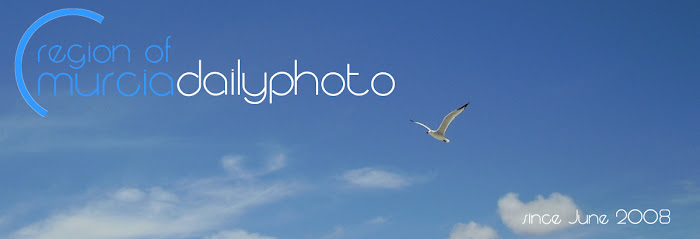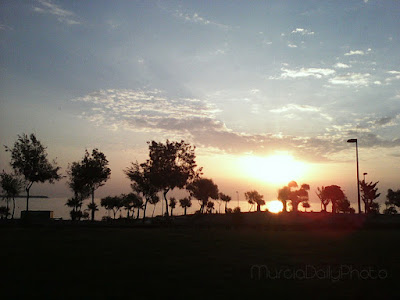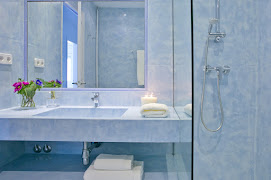A view from south of Calblanque coastline. At background right, the sand dunes of Calblanque beach. As I commennted in a
previous post, that is a "young coast" in geological times.
A little bit of Geology: "The collision between the aforementioned plates (see previous post) caused an intense deformation of the crust and the emersion of the sediments that for more than 200 million years had been accumulating at the bottom of the Tethys Sea. In reality, the convergence process was more complex since the interaction of three plates occurred: the African plate in the South, the Iberian plate, differentiated from the European plate, in the North, and the Alboran microplate, located between them. The east-west displacement of the Alboran microplate was ultimately what determined the formation of the Betic mountain range. This displacement was very complex and caused compressive structures in some areas and extensional in others.
The mountains of Cartagena, and in general the extreme South of the Region of Murcia, belongs to the so-called Internal Zones of the Betic Mountain Range, also called the Betic Domain or the Alboran Domain. In it, the compressive forces caused not only the folding but also the metamorphism of the materials, also producing thrusts of up to hundreds of kilometers. The Mountains of Cartagena-La Unión, like the rest of the Betic Mountain Range (Cordillera Bética), began to emerge from the sea at the beginning of the Miocene Superior, just 20 million years ago. After its initial emergence, the primitive Mountains of Cartagena suffered important transformations. After an important phase of erosion, it was partially covered by a transgressive and tardiogenic neogenic series whose age ranges from the Serravallian to the Tortonian. When the pressures between the plates, at the end of the Miocene, there was a distension phase, producing deep fractures in the earth's crust that gave rise to an important magmatic activity in the area (postogenic magmatism). Thus, the volcanic complex of Campo de Cartagena and Mar Menor was formed, approximately at the same time as other volcanic complexes located further west of the mountain range, such as those of Mazarrón and Gata Cape." (Source: Guía Geológica del Parque Regional deCalblanque, Monte de las Cenizas yPeña del Águila)









































































